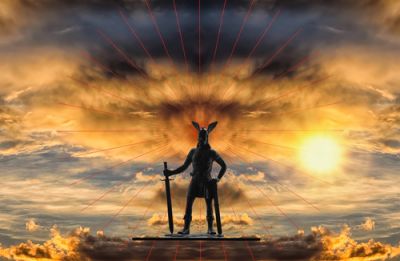 Many cultures from all over the world believe in an afterlife where the dead can go to rest. Some ancient Norse people hoped to find themselves in Valhalla, a realm where those deemed worthy resided with the all-father deity Odin. Many centuries have passed since these pre-Christian Germanic civilizations conceived of this world beyond the living. While some of their traditions are difficult to replicate in our modern age, followers of the Asatru faith look to these older writings and folk practices for their funerary customs.
Many cultures from all over the world believe in an afterlife where the dead can go to rest. Some ancient Norse people hoped to find themselves in Valhalla, a realm where those deemed worthy resided with the all-father deity Odin. Many centuries have passed since these pre-Christian Germanic civilizations conceived of this world beyond the living. While some of their traditions are difficult to replicate in our modern age, followers of the Asatru faith look to these older writings and folk practices for their funerary customs.
Valhalla and the Honored Dead
The Poetic Edda describes Valhalla as a hall for fallen heroes located within the godly realm of Asgard. Here, so the stories say, Odin allows the honored dead to live with him. At Norse Mythology for Smart People, historian Daniel McCoy mentions the writings of 13th Icelandic scholar Snorri Sturluson. According to Sturluson, only heroes who died gloriously in battle were thought to go to Valhalla, while those who perished from old age or sickness were doomed to awaken in Hel. McCoy refutes this idea in another article, clarifying that Hel was not a land of eternal torment but simply a place of rest where one could eat, sleep, fight, and practice magic. Odin and the Valkyries specifically handpicked the best warriors and rulers to reside in Valhalla, intending to lean on their help in the end-time battles of Ragnarök.
Sadly, No Funerals in Flaming Longboats
You may have seen “Viking funerals” in movies, complete with honored warriors sent off in flaming longboats. However, the Order of the Good Death humorously refutes that notion, pointing out that this method is not only illegal in contemporary times but also historically inaccurate. Some honored dead were buried inside ships filled with goods for their voyages in the next life. In turn, these vessels were interred inside burial mounds. Moreover, funeral pyres were a common practice in these cultures, with their huge pillars of smoke intended to raise the spirits of the deceased into the afterlife.
Reviving Ancient Customs in Modern Times
Contemporary Asatru pagans find many ways to reconstruct older Norse funerary rites within a modern context. A Rite of Passing for a deceased Heathen is usually conducted outdoors, and the Godi or clergyperson may construct the ritual space with several items:
- A circle with a fire pit
- A large altar
- Flags and rune banners
- Bells, incense, and other ritual objects
It’s also common to bury the dead with a replica of Thor’s hammer, or to place it on the lid if the service involves a closed casket. If the deceased is cremated, the hammer can be burned instead.
A nonprofit religious organization called The Asatru Community has documented some liturgical texts used in some Heathenry funerals. Generally, the presiding Godi starts by hallowing the space, followed by an explanatory introduction for those outside the faith and a short reading. Funeralwise divulges that one of the most popular readings is Hávamál 76, taken from the Poetic Edda:
“Cattle die, kinsmen die
the self must also die;
I know one thing which never dies:
the reputation of each dead man.”
The reading is followed by the memorial, during which friends and family speak about and toast to the departed. Services usually end with a prayer and closing remarks.
“The Rite Is Ended, but the Folk Go On”
An Indiana-based Asatru organization called the Kindred of Ravenswood explains that this faith regards itself as a “religion of the living.” Remembering the departed individual as a person, along with his or her actions, is considered vital. In this manner, Asatru memorials reflect the idea of preserving an individual’s memory, which lives on in those he or she has left behind.
Add Your Comment